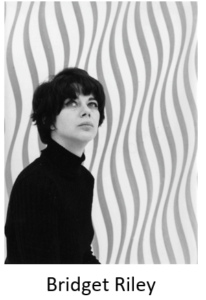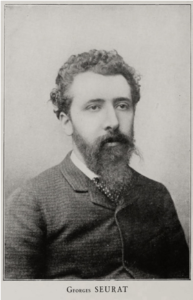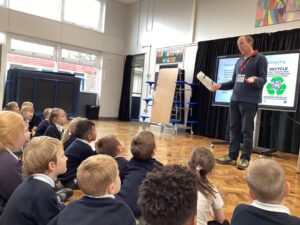Friday 11th November 2022
Be sure to practise your spellings a little bit each day! Little and often is better than cramming your practice in on Friday morning before school..!
- continue
- peculiar
- popular
- regular
- particular
- queue
- knew
- rescue
- amuse
- venue
- issue
- conclude
…or you may have been given a separate spelling list. These words are:
- because
- every
- with
- many
- busy
- could
- should
- would
This week’s message (Friday 11 November 2022)
As we always do, the message this week – second week of the half-term – is all about the new topic. The message comes from Mr Wilks, who leads Science and foundation subjects across Sphere Federation. The message ends with some important guidance to help tackle online bullying…
What do we mean by topics?
Topics are the vehicle for delivering much of the learning in the foundation subjects (eg History, Art, Geography, Design Technology). Each half-termly topic has a driving subject – the main focus for teaching pupils the knowledge and skills they need to succeed. The driver changes with each topic to ensure a broad and balanced curriculum.
Although the learning in each topic is provided by the driving subject, there are opportunities for enrichment through other subjects. For example, learning in an art topic may be enriched by geography learning about where an artist was born and lived.
Read more about the intent, implementation and impact of our topics.
What is this half-term’s topic?
This half-term, we’re artists. We’ll develop our art knowledge and skills.
The learning this half-term has two aspects to it:
- art history: your child will learn about some specific artists and their work
- art process: your child will practise and develop skills by creating art
Each phase has age-related knowledge, skills and vocabulary that they’ll learn, use and apply across the topic. Please see pages 11 and 12 of the Curriculum Statement document.
Children in Years 1 and 2 have two featured artists who they’ll study across the half-term: Georges Seurat and Bridget Riley. They’ll compare their art, talking about similarities and differences. They’ll discuss what they like and dislike about the art and how it makes them feel. They’ll also learn about the artists’ lives and where in the world they lived.
In practical art lessons, children will hone their artistic skills and knowledge by sketching objects using pencil and creating sculptures inspired by Bridget Riley’s art.
Children in Years 3 and 4 will learn about the work of two architects: Christopher Wren and Zaha Hadid.
They’ll compare and contrasting the buildings that these architects designed. They’ll look at the influence of classical Greek architecture on the two architects and look for examples of this in buildings locally. In practical art sessions, children will develop observational drawing skills, before focussing on digital art by manipulating images of buildings using technology and creating pieces of art using these images alongside digital art software.
Children in Years 5 and 6 are learning about and studying the work of two designers: William Morris and Orla Kiely.
They’ll look at examples of products that use their designs and then focus on the designs, analysing them using technical vocabulary. They’ll also compare the designs, spotting similarities and differences.
In practical art lessons, children will sketch their own designs inspired by Kiely or Morris. They’ll then create relief prints of their own designs which they’ll turn into a wallpaper design using a design website.
How can you help?
Talk to your child about what they’ve been learning. The Class News page of our website is a good place to go to find out more about what your child is doing.
Familiarise yourself with the artists and the artwork that your child will be learning about in class. Look in books or on the internet for pieces by the artists and talk about them. Find art by other artists that you like and compare it to the featured artists. If you feel confident, you can go into more depth using the topic-specific vocabulary. However, if not, leave that to the teachers and just enjoy looking at the pieces and asking general questions:
- What do you like or dislike about the art?
- How does the art make you feel?
- What colours can you see?
- Can you spot influence of Greek architecture in buildings (eg columns or pediments)?
The Tate Gallery has a good children’s website with games and activities which children can explore.
If you’re in Leeds, the Leeds Art Gallery and Henry Moore Institute are both free to enter and if your child has already visited during a trip, they can be the tour guide and show you around!
Moving on… Did you know next week is Anti-Bullying Week?
STOP
In our school, STOP stands for both the problem and the solution for bullying:
- Several Times On Purpose is the definition of bullying
- Start Telling Other People is the solution – encourage your child to tell any trusted adult if there’s a problem
We’ll mark the week with our Anti-Bullying Day on Monday, which happens also to be Odd Socks Day.
STOP online
According to Ofcom’s 2022 Media Use and Attitudes report, children are now more likely to be bullied via technology than they are to experience it in person. 84% of 8 to 17-year-olds who reported being targeted said it had taken place via messaging, social media, online gaming and so on, as opposed to 61% who had been intimidated face-to-face.
Just like its offline counterpart, online-bullying creates feelings of isolation and anxiety in its victims along with a loss of self-esteem.
Read about how to support your child and tackle this problem.
11 November 2022
Vocabulary is the focus of this week’s Talk Time.
We’ve just begun a new Art topic and with it comes new Art vocabulary.
This half-term, each phase is learning about different forms of Art. Y1,2 are focusing on sculpture, Y3,4 are focusing on digital art and Y5,6 are focusing on printing. Here’s a list of key words that are being learnt and applied as part of our learning. Over the half-term, practise using these words with your child.
Years 1 and 2 Art vocabulary:
- graphite: mixed with clay, graphite forms the ‘lead’ in a pencil
- HB: referring to pencils, HB stands for ‘hard black’ – a medium hard pencil
- H: stands for ‘hard’
- B: stands for ‘black’; these pencils are soft
- primary colours: three colours (red, yellow, blue) that can’t be made by mixing other colours, but can make other colours
- secondary colours: three colours (orange, green, purple) that are made when two primary colours are mixed using paint
- pattern: arrangements of things such as colour, shapes and lines that repeat in a logical way
- texture: how something feels, like smooth or rough
- op art: short for ‘optical art’, op art is a style of art that uses visual illusions
- pointillism: a form of painting where very small dots are used to form colours and images
- forgery: copying another artist’s work and making money from it
Years 3 and 4 Art vocabulary:
- complementary colours: colours that are opposite on the colour wheel (roughly, a primary and a secondary colour can be paired up like this)
- warm colours: roughly one half of the colour wheel, warm colours (like red, orange, yellow) usually represent heat and emotions like anger and excitement
- cool colours: roughly one half of the colour wheel, cool colours (like blue, green, purple) usually represent cold things and emotions like calm and sadness
- form: often used to talk about sculpture or the human body, form is the physical aspects or the shape of the artwork or parts of the artwork
- space: usually used to describe areas or parts of an artwork where there are large blocks of colour or ‘gaps’
- medium: the type of art (eg painting, sculpture, printmaking), or the materials an artwork is made from (plural: media)
- digital art: art that is made or presented using digital technology
- architecture: a specific form of design: buildings and other structures
- architect: a person who designs buildings and other structures
- commission: a person or people chosen to produce something, eg a portrait, a building
Years 5 and 6 Art vocabulary:
- pastel: a coloured drawing medium, usually stick-shaped, produced in soft, hard and pencil formproduced in soft, hard and pencil form
- art: the expression of creativity or imagination, or both
- art movement: a style in art followed by a group of artists, often linked to a time and place or to particular artists (sometimes called an ‘ism’)
- printing: transferring ink (or some other medium) from one surface to another
- Arts and Crafts Movement: a design movement started by William Morris in 1861 which aimed to improve the quality of design and make it available to the widest possible audience
- graphic design: covers a range of design activities including logo creation, advertising and typography (fonts)
- industrialisation: the process of using machines to work that was previously done by people.Some of these words have been introduced already this week but there may be others that are going to be covered in the coming weeks.
Art Topic
This half term, our topic is Art. We will be focusing on the work of George Seurat and Bridget Riley.


Seurat used a technique called pointillism.

Zoom in and look at his Sunday Afternoon painting. Can you see all the small dots used to create the painting?
Bridget created op art pieces.

We have started by talking about the topic vocabulary, which you can see below.

Amazing adjectives!
Today, in Key Stage 1, we had a special adjective day! We all came dressed up as an adjective – some examples include sleepy, sporty, powerful, stripy and smart!
An adjective describes a noun. A noun is a thing, place or a name.


Amazing adjectives!
Today, in Key Stage 1, we had a special adjective day! We all came dressed as an adjective – some examples include sleepy, sporty, powerful, stripy and smart!
An adjective describes a noun. A noun is a thing, place or a name.


We labelled some nouns in our classroom. Then, we thought of some adjectives to describe them.
‘The fluffy pillows.’
‘The snuggly teddy bear.’
‘The red book.’
Ask your child: which is the noun? Which is the adjective?

Digital Art
This half term, the children will have an art themed topic. As well as developing the children’s practical skills, we will be learning about art history. Our art will be created and presented using digital technology.
In lessons, we will be studying some architecture. Spend some time at home discussing these questions and images. What do you like? What don’t you like? What’s the same and what’s different? Which are modern and how do you know? How could you describe these amazing pieces of architecture?
What is an architect?
What job do they do?
Can you name any famous architects?



![]()
Below is a list of the vocabulary the children will be using throughout this topic. Ask your child if they know any of these words and can they tell you their definitions?
| complementary colours |
| warm colours |
| cool colours |
| form |
| space |
| medium |
| digital art |
| architecture |
| architect |
| commission |
Spellings
Next week, we will be learning about how to make words plural. Learn the following words for a test on Friday 11th November:
communities
attaches
categories
dictionaries
wolves
hooves
puppies
crutches
Community week
This week, we’ve had lots of visitors into school because it’s been our community themed week. The week got off to a great start when the Mayor of Wetherby visited us and spoke to us about his responsibilities within the local community and how he became Mayor through a democratic vote.
Throughout the rest of the week, we had our local community police officer visit us to talk to us about staying safe in our community; Wetherby in Bloom came into school to talk to us about how they support our local community and our younger children potted some plants with the help of some of their volunteers; Boston Spa, Wetherby and Villages Community Group came into talk to us about how we can help the environment; and Wise Charity spoke to the children about supporting the elderly within the local community with the help of their mascot owl!
Children in Years 4- 6 Zoomed some children at Moortown Primary School to compare our school communities and found out some similarities and differences. A group of children also had the opportunity to speak on the local radio station, Tempo FM. It’s been a busy week!
Thank you to all our visitors for making our week so enjoyable.






04 November 2022
This week, we’re thinking about homophones – words that sound the same but are spelled differently and have different meanings.
We need children in Year 4 to not only know how to spell these words but to also have the skill of knowing which word is the right one to use at the right time!
hear/here
break/brake
heel/heal/he’ll
berry/bury
whether/weather
buy/bye/by
there/their/they’re
to/too/two
where/wear/were
who’s/whose